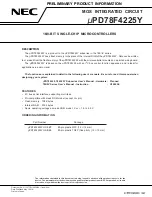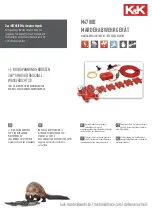
Studer Innotec SA
VarioString
User manual
25
7
BATTERY CHARGING PROCESS
7.1
G
ENERAL POINTS
The VarioString has many parameters that can be modified by the user or the installer in order to
adapt the equipment to the energy system the best possible way. The factory values of these
parameters are reported in the table at the end of this manual (see chap.16).
These parameters can be modified by means of the remote control RCC-02/03 (optional) (see chap.
10.1) and for some of them, a basic configuration can be done using the DIP switches (10) inside the
equipment (see chap. 9.1).
7.2
B
ATTERY CYCLE
The VarioString is a fully automatic solar charge
regulator designed to guarantee an optimum charge
for most lead/liquid acid, lead/gel or AGM batteries.
The battery charger enters automatically into
operation as soon as the irradiation is sufficient and the
photovoltaic panel voltage is higher than 200V. The
“Charge” indicator (2) lights up or flashes depending
on the on-going charging phase.
The batteries can be fully charged by the successive
phases 1 to 4 described hereunder.
7.2.1
Bulk phase (1)
The bulk phase is the stage when the voltage of the battery rises thanks to the maximum available
current (VS-70: 70A / VS-120: 120A) produced by the photovoltaic generator depending on the
irradiation at the time. It is important that the max battery charge current be set according to the
battery specifications to prevent damaging them. This current can be limited with parameter {14001}
“maximum output current”. It is possible that these currents are not reached if the generator power
is not sufficient because of its dimensioning, solar power, silicon temperature (crystalline cell), or
because the ambient temperature is excessive (or the ventilation is insufficient).
7.2.2
Absorption phase (2)
The absorption phase can be disabled by parameter {14008}. The maximum voltage that can be
reached will be the floating voltage {14005}. It is the case when charging a Li-Ion battery.
This charging phase, of a limited duration {14011}, allows the battery to absorb a maximum of power
while limiting its voltage {14009}. As soon as this absorption voltage is reached, the duration of the
phase is counted down as long as the voltage remains higher than the floating phase {14005}. The
end of the absorption triggered by the current {14012} can be enabled if necessary. If the charging
current is lower than the end of absorption current {14013} whereas the voltage limit is reached, the
absorption phase is considered finished.
7.2.3
Floating phase (4)
When the battery is completely charged, a constant reduced voltage {14005} is applied on the
battery. This voltage prevents self-discharge and keeps the battery at its maximum charge level and
reduces to the minimum the water evaporation that would occur at a higher voltage.
7.2.4
Equalization phase (3)
This phase is allowed {14017} only for open batteries with liquid electrolyte. During this phase, the set
voltage limit for the battery {14021} is temporarily {14022} higher. It allows on one hand to equalize
the electrolyte density through mixing (corrosion control) and on the other hand to equalize the
charge among the cells of the battery.
The default battery cycle is suitable for a large number of batteries, whether gel or not,
because the equalization phase is not activated.
Содержание VarioString VS-120
Страница 2: ...Studer Innotec SA VarioString 2 V 2 3 User manual ...
Страница 13: ...Studer Innotec SA VarioString User manual V 2 3 13 4 1 2 VarioString VS 120 ...
Страница 61: ...Studer Innotec SA VarioString User manual V 2 3 61 ...
Страница 62: ...Studer Innotec SA VarioString 62 V 2 3 User manual ...
Страница 63: ...Studer Innotec SA VarioString User manual V 2 3 63 ...
















































